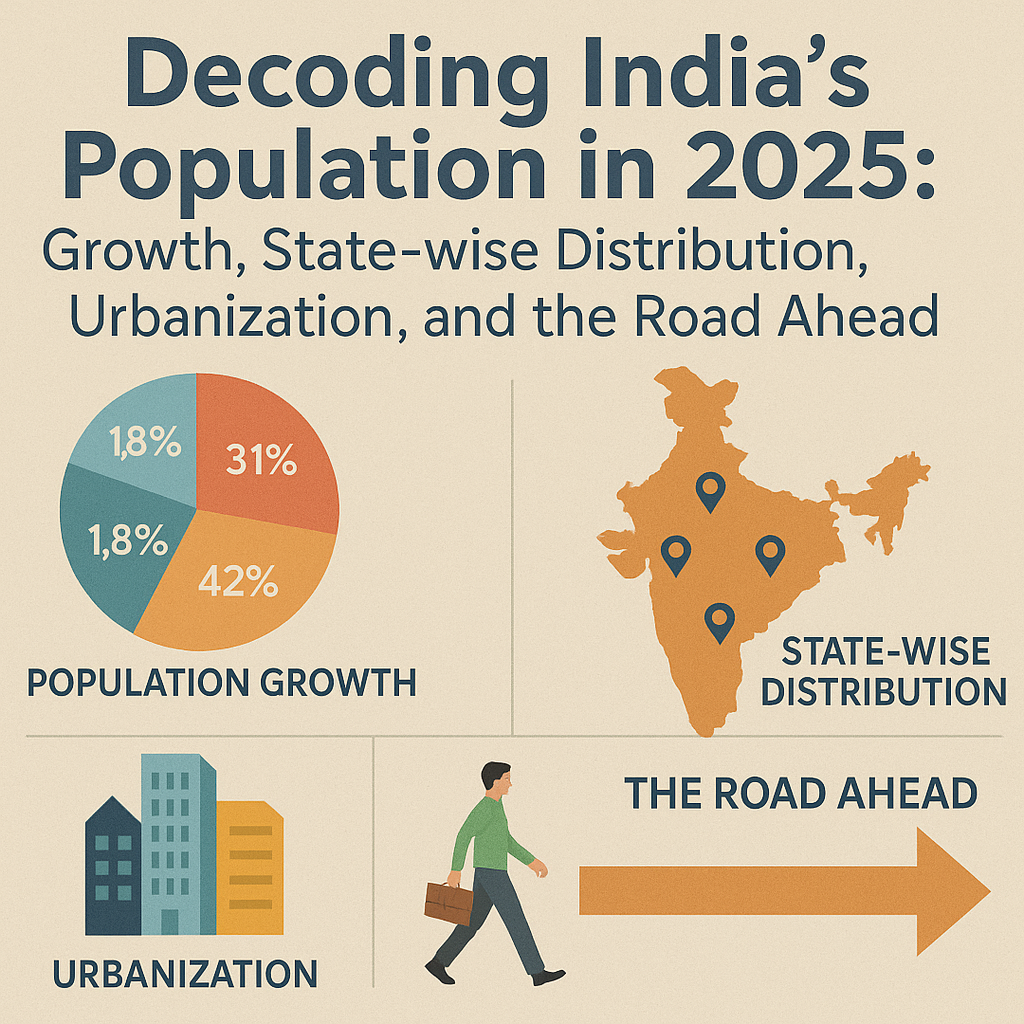Population
From booming metros to declining villages, India’s population story is one of extremes—growth, migration, resource stress, and demographic shifts. Decode how people power is shaping the country’s destiny.
India stands at the crossroads of one of the most complex demographic transitions in modern history. With over 1.4 billion people, it recently surpassed China to become the world’s most populous country. But this isn’t merely a number to celebrate or fear—it’s a signal flare of the profound social, economic, and environmental challenges that lie ahead. India’s population growth is unevenly distributed, heavily concentrated in certain regions, and shifting rapidly due to urbanization, migration, and changing fertility patterns.
Urban centers like Mumbai, Delhi, Bengaluru, and Hyderabad continue to swell with incoming migrants searching for jobs, better education, or a chance at upward mobility. This has led to unprecedented pressure on urban infrastructure—affecting water supply, waste management, housing, and public transport. Meanwhile, several rural areas are witnessing a different crisis: declining population, abandoned farmland, aging villages, and shrinking school enrollments.
The youth bulge is another defining feature of India’s demographic landscape. With over 50% of its population under the age of 30, India has the potential for a massive demographic dividend—if it can provide enough jobs, quality education, and healthcare. If not, the same youth energy could spiral into discontent and instability.
Migration patterns also paint a striking picture. States like Bihar and Uttar Pradesh are witnessing large-scale outward migration, while Maharashtra, Gujarat, and Karnataka attract a significant share of the mobile workforce. The reasons are deeply rooted in disparities in governance, opportunity, and resource allocation. At the same time, India is also seeing new internal demographic shifts: the rise of tier-2 cities, aging populations in Kerala and Tamil Nadu, and the influx of gig workers into app-driven urban ecosystems.
Public policy, too, is deeply entangled with population issues. Debates around family planning, reproductive rights, NRC (National Register of Citizens), and even electoral constituency delimitation are all shaped by demographic numbers. Climate change adds yet another layer—regions prone to floods, droughts, or heatwaves are seeing population displacement and environmental migration, sometimes silently and without notice.
Understanding population is not just a matter of counting heads. It’s about decoding the silent movements, cultural shifts, and infrastructural tipping points that define India's evolving story. As the country balances aspirations with limitations, the population debate is no longer about growth alone—but about inclusion, equity, and sustainability.

